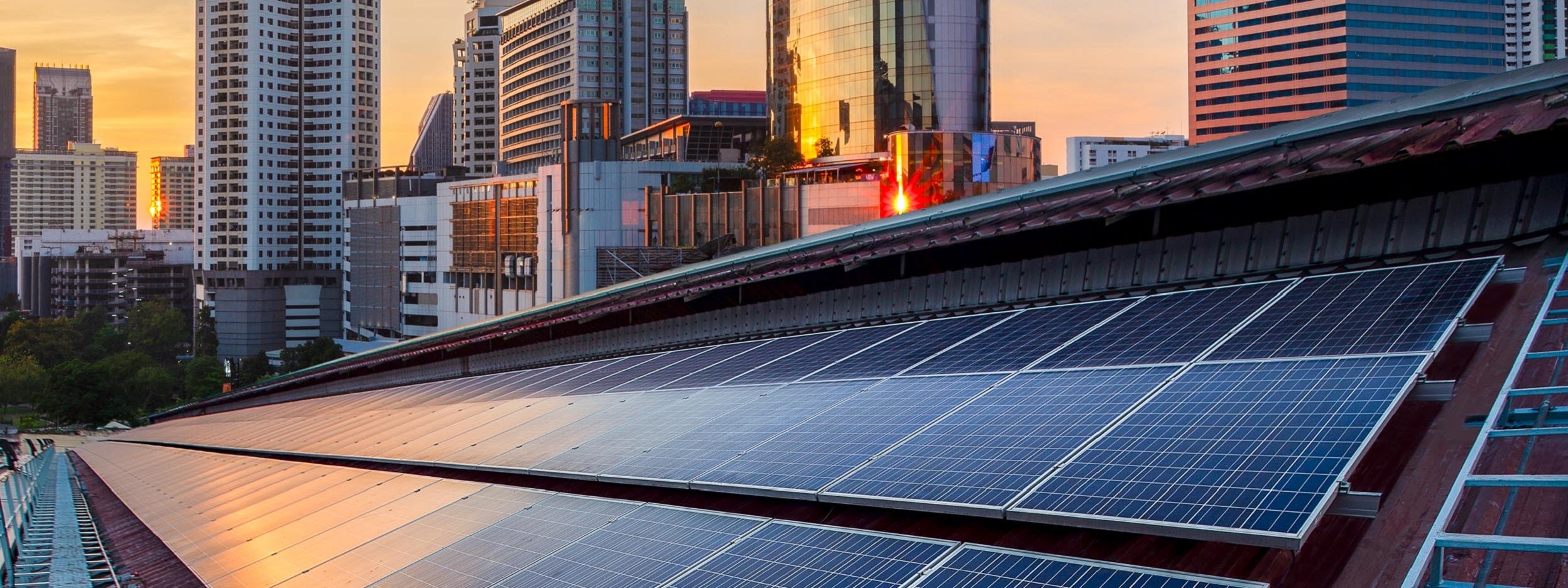
Energy & emissions
We’re minimizing our impact on climate change by continually reducing energy use and GHG emissions in our facilities and operations.
46%
reduction in energy use and emissions output by 2030
43%
Scope 1 and 2 (location-based) emissions reduction since 2019
50%
energy use reduction since 2019
We take action to continually reduce energy use and GHG emissions in our facilities and operations. This includes setting reduction targets, tracking our emissions, achieving reductions and reporting our progress publicly.
In 2021, Invesco set a goal to reduce our energy use and emissions output in line with the Science Based Targets initiative by 4.2 percent year-over-year, reaching 46 percent by 2030, and net zero by 2050, or sooner, to help mitigate the effects of climate change.
In 2022, we began the development of a global decarbonization strategy for our corporate properties, beginning with audits of our higher-emission locations. This strategy will likely result in an increased use of renewable energy and green leasing in our leased properties, providing Invesco with a foundation for reaching net zero emissions.
In our corporate operations, our largest environmental impacts are our GHG emissions, which come from three main areas: Scope 1, direct emissions from sources owned or controlled by Invesco; Scope 2, indirect emissions from purchased electricity, steam, heat and cooling; and Scope 3, all other emissions associated with our activities, such as purchased goods and services, capital goods, waste, business travel, employee commuting and investments (not included in the scope of the operations emissions).
Since our 2019 baseline year, electricity use has decreased by 39 percent and natural gas use reduced by 69 percent, for an overall energy use reduction of 39.5 percent (market-based) and 50 percent (location-based). Additionally, our Scope 1 and 2 (location-based) emissions have decreased by 43 percent. These reductions are a result of ongoing energy efficiency initiatives at our offices and increased use of renewable energy, reduced office space and significantly less corporate energy usage and travel in 2020 and 2021. Our emissions assurance statement for our 2022 emissions will be published upon completion.
Invesco has disclosed data and actions to the CDP Climate Change Disclosure recommendations since 2016. We received a B score for the 2022 CDP Climate Change Disclosure, demonstrating management and coordinated action on climate issues. We received an A- score for the 2022 CDP Supplier Engagement Rating, which indicates that Invesco is effectively engaging our suppliers on climate issues.
Over the past 4 years, electricity use decreased by 39 percent and natural gas reduced by 69 percent, for an overall energy use reduction of 39.5 percent (market-based) and 43 percent (location-based).
Important Information
-
1
Actual data (e.g., utility bills, invoices, meter readings) is used where available. Where data gaps exist, estimations and assumptions have been made to provide a complete data set, where practicable.
-
2
We have restated data in the reporting years, 2019–2021 to align with the data assurance process.
-
3
Scope 3 increased in 2022 as a result of travel returning to prepandemic levels and the purchase of goods and services associated with our new, sustainable headquarters in Atlanta.
